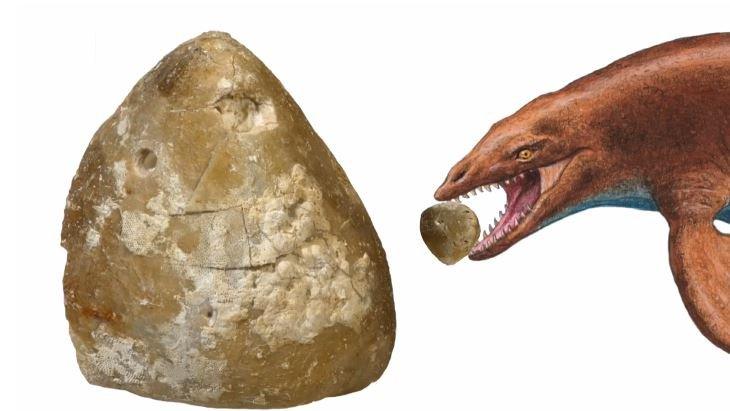Danish sea urchin fossil reveals ancient drama
- Published

It's believed the sea urchin survived a snack attack by an aquatic lizard
An amateur paleontologist has discovered a rare 66-million-year-old sea urchin on a beach in Denmark.
Peter Bennicke stumbled across the ancient creature while on a fossil hunt at white cliffs of Stevns Klint on the Island of M├©n, a UNESCO World Heritage site, according to the Danish .
He knew straight away that he had found something unique - not only because of its large size, but also because it contained clues as to what had happened to it.
'Failed hunt'
"I could see it was a pretty large sea urchin, so I took it home to look at it more closely. That's when I saw that it had been bitten," Mr Bennicke .
Judging by the teeth marks situated right on top of the fossil, the sea urchin survived an attack by a predator that came from above. One speculation is that the scars could have been caused by the jaws of the marine predator Mosasaurus.
Mr Bennicke described it as his "best-ever find". "This happened 66 million years ago, and to think that I'm just standing here with it in my hand, visualising the drama that took place so far back," he said.
You might also be interested in:
Experts have put in some detective work to solve the prehistoric Nordic Noir
The fossil has caught the attention of the Geomuseum Faxe, where it will be exhibited from February.
Jesper Milàn, a curator at the museum, told: "This is a very exciting find. Not only because of the unique backstory, but also because it provides important information about how the animals in the sea lived, and who devoured who."
There's a good reason why finding a whole sea urchin fossils is rare, according to Mr Milàn - sea urchins move slowly and are normally eaten by predators, so only small shells are left behind.
Reporting by Krassi Twigg
Next story: Taiwan students DNA-tested in yoghurt thief whodunnit
Use #NewsfromElsewhere to stay up-to-date with our reports via .